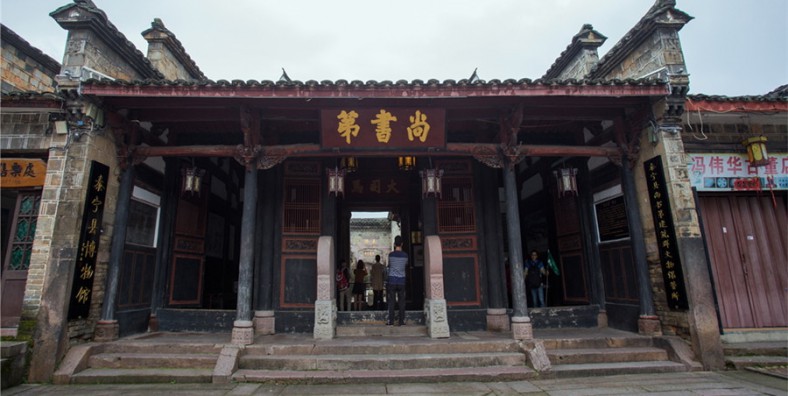Shangshu Di in Sanming City

Chinese Name: 三明市尚书第
English Name: Shangshu Di in Sanming City
Type: Tourist Attraction , Points of Interest & Landmarks, Cuture Attractions
Best Time: All Year Around
Recommended Visiting Hours: 1~2 hours
Opening Hours: 08:30-17:00
Ticket: 25/person
Location: Taining County, Sanming City, Fujian Province
Shangshu Di
Shangshu Di(尚书第), also known as Wufutang(五福堂), is located in Taining County, Fujian Province. Shangshu Di was founded in the Ming Dynasty and was the residence of Li Chunye(李春烨), an officer of the Ming Dynasty’s military department. Shangshu Di’s stone carvings and brick carvings are exquisite, rich in local characteristics and magnificent in scale. They are precious material materials for studying ancient houses in Fujian Province. In 1988, the State Council of the People’s Republic of China promulgated Shangshu Di as a key cultural relic protection unit in China.
Features of Shangshu Di
Shangshu Di is the largest and most complete Ming Dynasty residence in Fujian. Residents here also use Ming Dynasty wells for daily drinking water. There are wax museum and Folklore Museum in Shangshudi. The layout of the whole mansion is rigorous, reasonable and magnificent.
Shangshudi has more than 120 rooms, which is a typical ancient building complex arranged in the form of traditional “three halls and nine buildings” in Taining. There are five main buildings, eight auxiliary buildings, and one building is separated by a fire wall. The corridors are connected independently,the halls, patios, corridors and rooms are all made up of masonry and wood structures, which constitute a scientific and practical form of residential buildings.
Shangshudi Architectural Complex is a fine building in Ming Dynasty. It maintains the architectural style of Ming, Qing Dynasty and other different periods from the Republic of China to the present, and concentrates the living scenes of ancient buildings. There are also old streets and ancient houses left in the city.
How to Get There
Taining Railway Station – Taining County Hospital Station (you can get off at No. 5. 1 yuan) and walk for about 10 minutes – Shangshu Di Scenic Area
Useful Travel Tips
1. Local Customs
The custom of “stealing pumpkins” in the Mid-Autumn Festival still exists in the local area. On the night of Mid-Autumn Festival, young men and women send “stolen” pumpkins to the newly married couple’s home. The owner must cook the pumpkins and share them with everyone, and also bring out good wine and dishes to entertain them. The sender must leave the pumpkin with the pedicle to the bride because the pedicle symbolizes the birth of a boy. The person who was “stolen” the pumpkin on this day was happy, because it meant that he was “a blessed man”.
2. Food Recommendation
Xiamou taro bag(夏茂芋包) has its own characteristics because Xiamou(夏茂) is rich in land, mild climate, abundant water, and the taro produced is especially tender.













